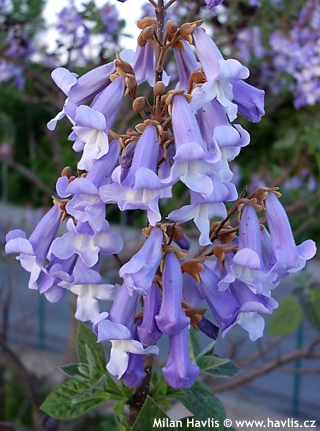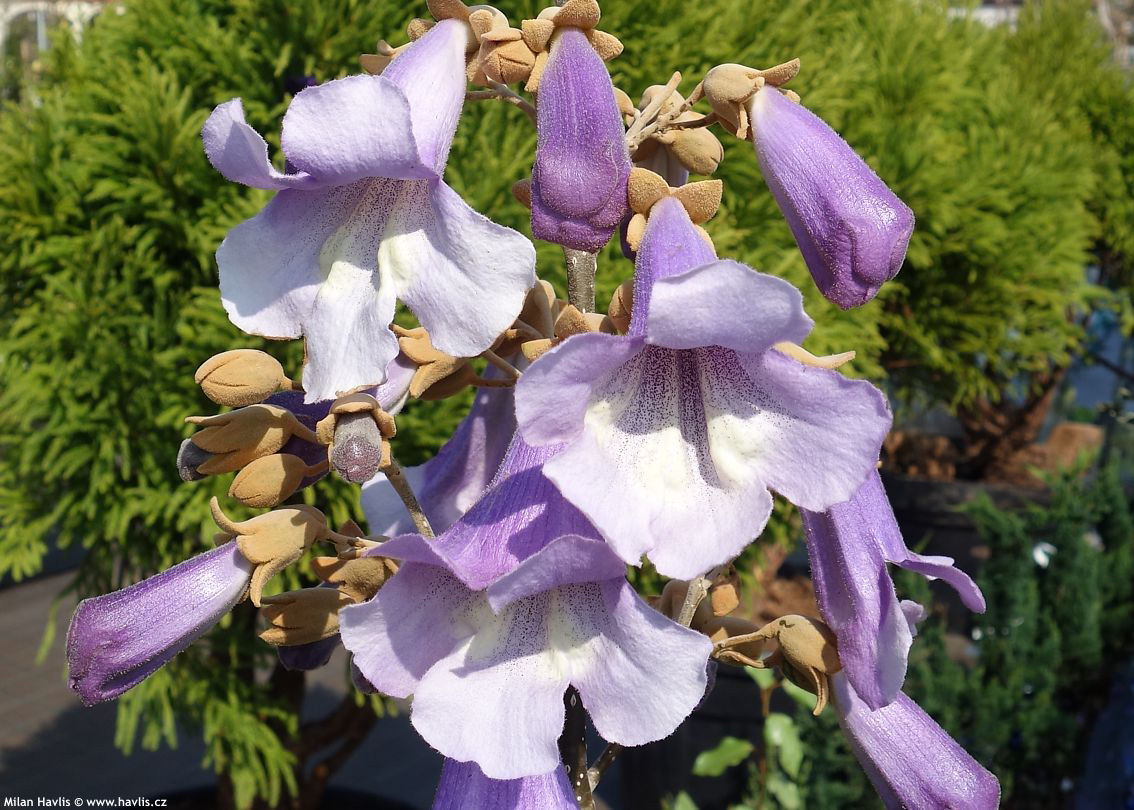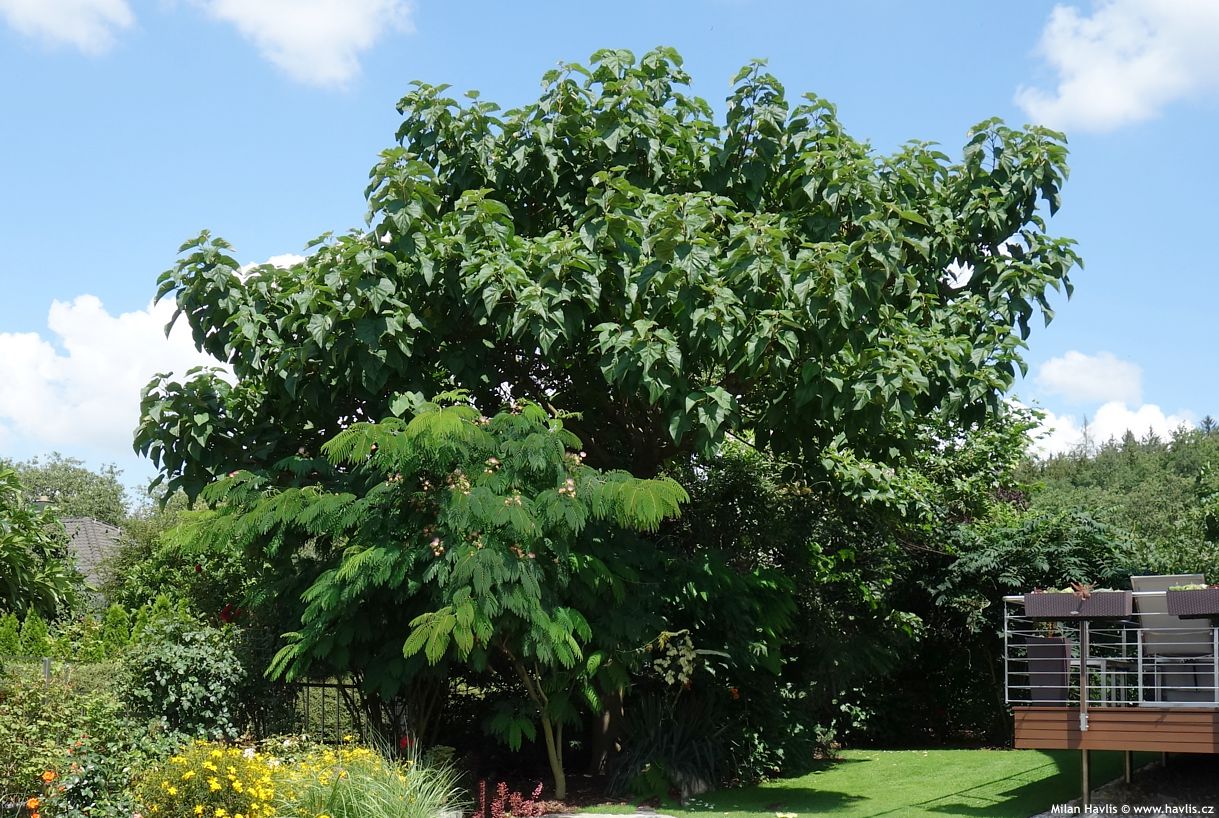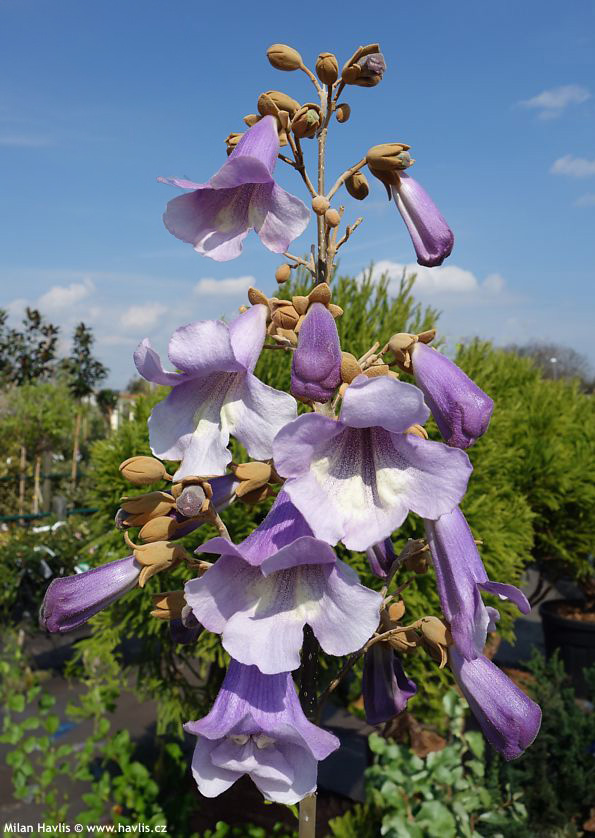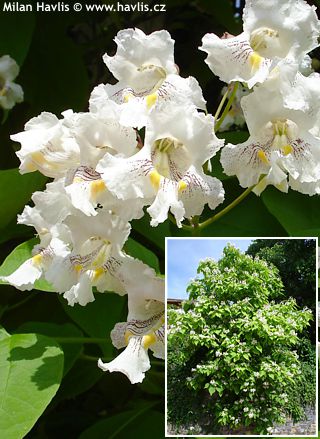Paulownia fortunei 'Minfast' FAST BLUE® foxglove tree
Paulownia
Fortune's paulownia is a species from China and Taiwan notable for its pyramidal, nearly fastigiated growth, evident especially on shrubby or multi-stemmed plants. It is also called white paulownia since the flowers are originally only pale lilac to creamy white with yellowish throat. However, selections with stronger colours have been made, and FAST BLUE® variety is one of them.
FAST BLUE® paulownia, registered as 'Minfast', originated in Minier Nursery in France in 2000. It is a fast growing selection of Fortune's paulowniawhich flowers already in its first year after grafting. The flowers are widely funnel-shaped, foxglove-like, very fragrant, deep violet purple outside and almost creamy white inside with yellow throat. They are composed in dense, erect panicles, and come out one or two weeks before empress tree, usually in early May (Central Europe). Blooming occurs every year, however, it may be more profuse every other year. Only if the growing season is cold and short there may be very limited amount or almost no flower buds for the following spring (exceptional case).
Deciduous leaves are large, heart-shaped, mid green, very hairy underneath, about 20cm across on adult trees, and much larger, almost twice the size on young plants. The habit is narrowly columnar, with a much more compact canopy which does not become as wide or parasol-shape as on empress tree. Young plants grow very fast, slowing down when fully established (in 3-5 years). Then they start making short twigs with terminal racemes of flowers, just like magnolias.
Paulownia needs deep soil of almost any pH, rich in humus. It is believed that in acid soil the flowers are more of a blue tone while in alkaline soil they turn rather pinkish lilac. Root system is deep and does not lift foundations or pavements. Tree forms need a strong support for more than 3 years after transplanting to avoid trunk deflection caused by wind blowing into its thick crown. Location needs to be warm, sheltered from strong winds in order to protect flower buds that need to overwinter. Older plants are fully hardy, young plants may be prone to frost damage on immature wood. Good help is to cut down on fertilizing them totally. Otherwise it is hardy to about -25°C (USDA zone 5b-6).
Last update 28-03-2007; 11-02-2016

































